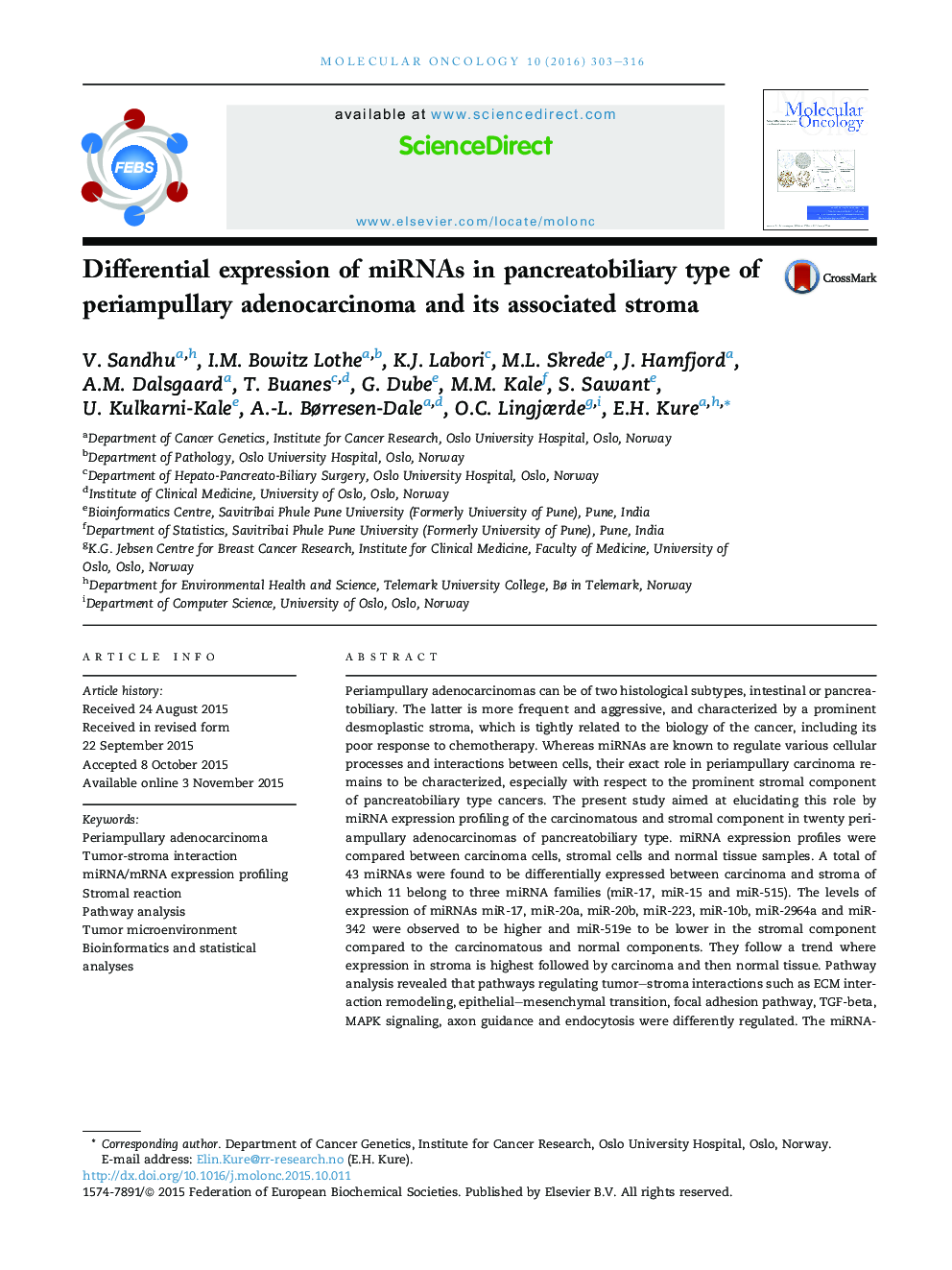| Article ID | Journal | Published Year | Pages | File Type |
|---|---|---|---|---|
| 10914552 | Molecular Oncology | 2016 | 14 Pages |
Abstract
Periampullary adenocarcinomas can be of two histological subtypes, intestinal or pancreatobiliary. The latter is more frequent and aggressive, and characterized by a prominent desmoplastic stroma, which is tightly related to the biology of the cancer, including its poor response to chemotherapy. Whereas miRNAs are known to regulate various cellular processes and interactions between cells, their exact role in periampullary carcinoma remains to be characterized, especially with respect to the prominent stromal component of pancreatobiliary type cancers. The present study aimed at elucidating this role by miRNA expression profiling of the carcinomatous and stromal component in twenty periampullary adenocarcinomas of pancreatobiliary type. miRNA expression profiles were compared between carcinoma cells, stromal cells and normal tissue samples. A total of 43 miRNAs were found to be differentially expressed between carcinoma and stroma of which 11 belong to three miRNA families (miR-17, miR-15 and miR-515). The levels of expression of miRNAs miR-17, miR-20a, miR-20b, miR-223, miR-10b, miR-2964a and miR-342 were observed to be higher and miR-519e to be lower in the stromal component compared to the carcinomatous and normal components. They follow a trend where expression in stroma is highest followed by carcinoma and then normal tissue. Pathway analysis revealed that pathways regulating tumor-stroma interactions such as ECM interaction remodeling, epithelial-mesenchymal transition, focal adhesion pathway, TGF-beta, MAPK signaling, axon guidance and endocytosis were differently regulated. The miRNA-mRNA mediated interactions between carcinoma and stromal cells add new knowledge regarding tumor-stroma interactions.
Related Topics
Life Sciences
Biochemistry, Genetics and Molecular Biology
Cancer Research
Authors
V. Sandhu, I.M. Bowitz Lothe, K.J. Labori, M.L. Skrede, J. Hamfjord, A.M. Dalsgaard, T. Buanes, G. Dube, M.M. Kale, S. Sawant, U. Kulkarni-Kale, A.-L. Børresen-Dale, O.C. Lingjærde, E.H. Kure,
